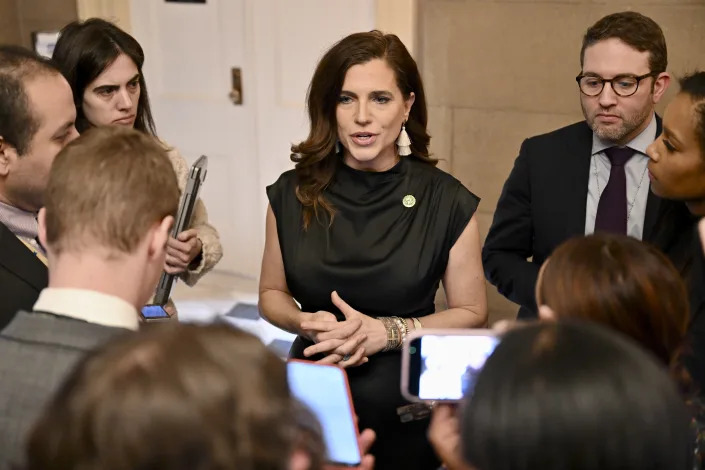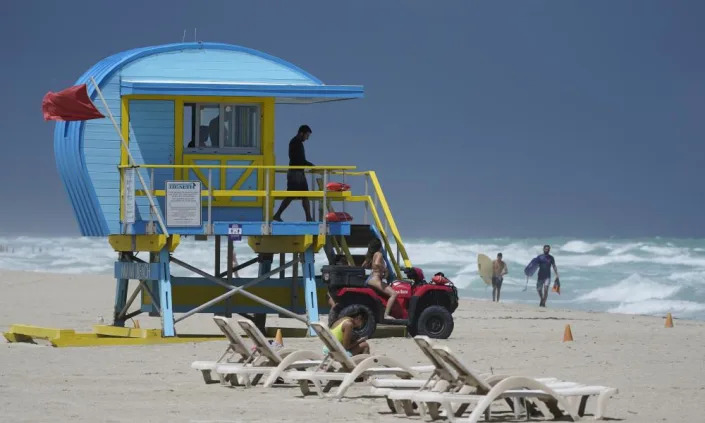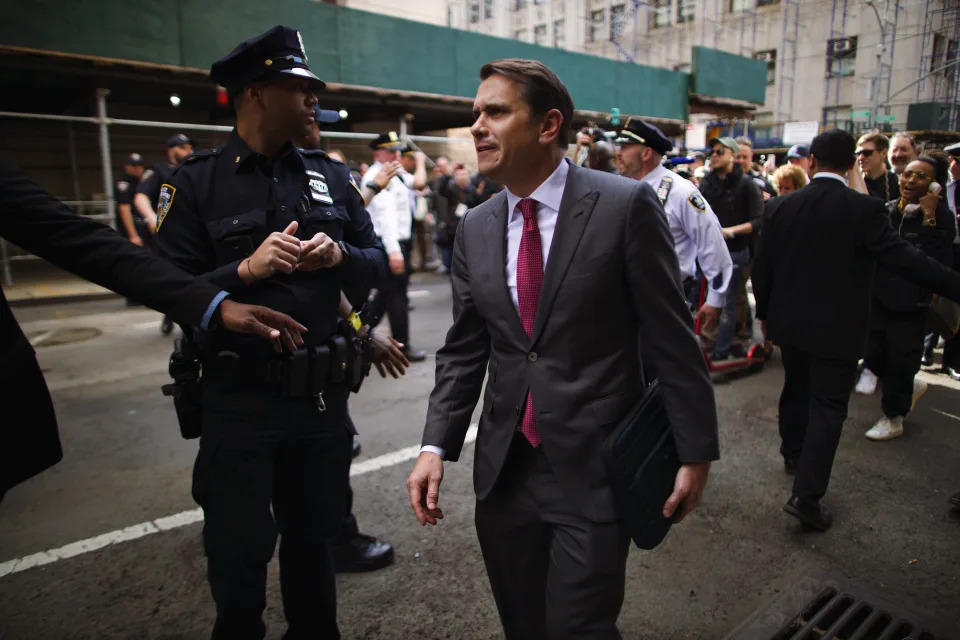Real Simple
How to Fall Back Asleep After Waking Up in the Middle of the Night
Ashley Zlatopolsky – April 11, 2023
Sleep experts share what to do and what to avoid.

You’ve probably been here before: It’s 3 a.m., you’re awake for reasons you can’t explain and now you can’t fall back asleep. Should you continue tossing and turning and hope for the best, or get out of bed to do something that makes you sleepy again? The best course of action lies somewhere in the middle. Here’s what sleep experts recommend doing (and avoiding) if you wake up in the middle of the night and need help falling back to sleep.
What causes nighttime waking?
Normal, natural sleep patterns.
There are few things worse than waking up in the middle of the night, whether from anxiety or another reason, and not being able to fall back asleep. But waking up in the middle of the night is actually normal. “Everybody wakes up in the middle of the night,” says Philip Lindeman, MD, PhD and a sleep expert with Ghostbed. “Normal sleep cycles are such that we all enter at least a very shallow phase of wakefulness several times per night.” This can include interludes of getting up to use the bathroom and then going back to sleep. In fact, he adds that you may not even remember many of these awakenings happening.
Related:8 Harmful Habits to Avoid if You Want Better Sleep, According to a Sleep Consultant
Internal health issues and environmental factors.
Other causes of nighttime waking can include stress, anxiety, illness, hunger, discomfort, or changes in your sleep routine and sleep environment, explains clinical psychologist Carolina Estevez, PsyD. Then there are causes like nightmares or night terrors, or environmental noise or light disturbances.
Clearly middle-of-the-night waking is common and far from unavoidable, and is typically fine if we can get back to sleep without much of a problem. The real issue arises when you wake up, either naturally or unnaturally, and can’t fall back asleep afterward. This can actually cause more stress and anxiety that keeps you awake, and of course cause you miss out on precious sleep for your overall health.
How to Fall Back Asleep, According to Experts
Let your mind wander in a “happy place.”
If you’re awake in the middle of the night and wondering how to fall back asleep, Dr. Lindeman first recommends getting yourself in a good headspace. “Try guiding yourself into a ‘happy place,’ ‘flying’ over a place you like, or even ‘walking’ there if it helps,” he says. “Don’t worry if your eyes are open or closed, because it doesn’t matter. What matters is that the room is dark.” Dr. Lindeman says to “let your mind wander and do your best to stay there,” which can lull you into a sleep.
After about 20 minutes, find another place to lie down.
However, Dr. Lindeman adds that it’s important not to force sleep, which he says can have the opposite effect. If more than 20 minutes have gone by and you’re still lying awake in bed, Estevez suggests getting up and going into another room that might help calm your mind. Ideally, this is a room with a couch or even another bed where you can lie down and encourage rest.
Related:3 Reasons to Start Reading a Book Before Bed, According to Research and Sleep Pros
Try simple relaxation techniques.
“You can also try relaxation techniques such as deep breathing or progressive muscle relaxation,” she adds. Some research has shown that slow breathing, together with healthy sleep hygiene and habits, may be more effective for insomnia than interventions like hypnosis or prescription medications. One breathing exercise called 4-7-8 breathing, which involves an elongated exhale, helps deactivate your stress system and activate your rest and digest system.
Get more physical exercise during the daytime.
Estevez also says that incorporating regular physical activity into your day can help promote better sleep quality at night and prevent occurrences of nighttime waking and sleeplessness.
Related:6 Feel-Good Stretches You Should Do Every Night Before Bed
What Not to Do
There’s more on the list of things you should avoid rather than things you should do if you’re wondering how to fall back asleep. The biggest thing to avoid: your cell phone, and then your TV. “Don’t open your phone, tablet, or computer,” Dr. Lindeman says. “It’s the worst thing you can do because the wavelength of light emitted will bottom out your melatonin levels.” Since blue light and bright light stops melatonin production, which is essential to making you feel sleepy, playing around on your phone or putting on a Netflix show can cue your body further for wakefulness.
Dr. Lindeman also cautions against turning on a light, eating, drinking, or taking medicine unless you’re in pain (such as being sick with a virus and unable to fall back asleep because of it). If you’re really struggling to fall back asleep and none of the above has helped, you can try taking a hot bath or diffusing lavender oil in your bedroom, but these should be last resorts, since the act of turning on lights or looking for things to help might in turn wire your brain some more.
Another thing to avoid is the clock. Seeing what time it is can cause anxiety and keep you from falling back asleep, so if you have regular nighttime awakenings that leave you awake for long periods of time, you may want to consider removing any clocks from your room (or at least keeping them out of your sight). If noise is keeping you up, earplugs or a sound machine are other options to consider, while light disturbances can be blocked out with a good set of blackout curtains or a quality eye mask.
Related:10 Soothing Podcasts for Sleep That Will Have You Out Like a Light
What to Do if Nothing Works
If waking up in the middle of the night and not being able to fall back asleep is affecting your mental health or daily functioning, and you’ve tried all of the above to no avail, an underlying medical sleep condition, like insomnia, could be at the root of the problem. To get to the bottom of it, Estevez says, “speaking with a health professional may be helpful in developing an individualized treatment plan.” However, be sure to practice good sleep hygiene, keep a regular sleep schedule and avoid stimulating activities at night, like scrolling your phone before bed or working out late.







